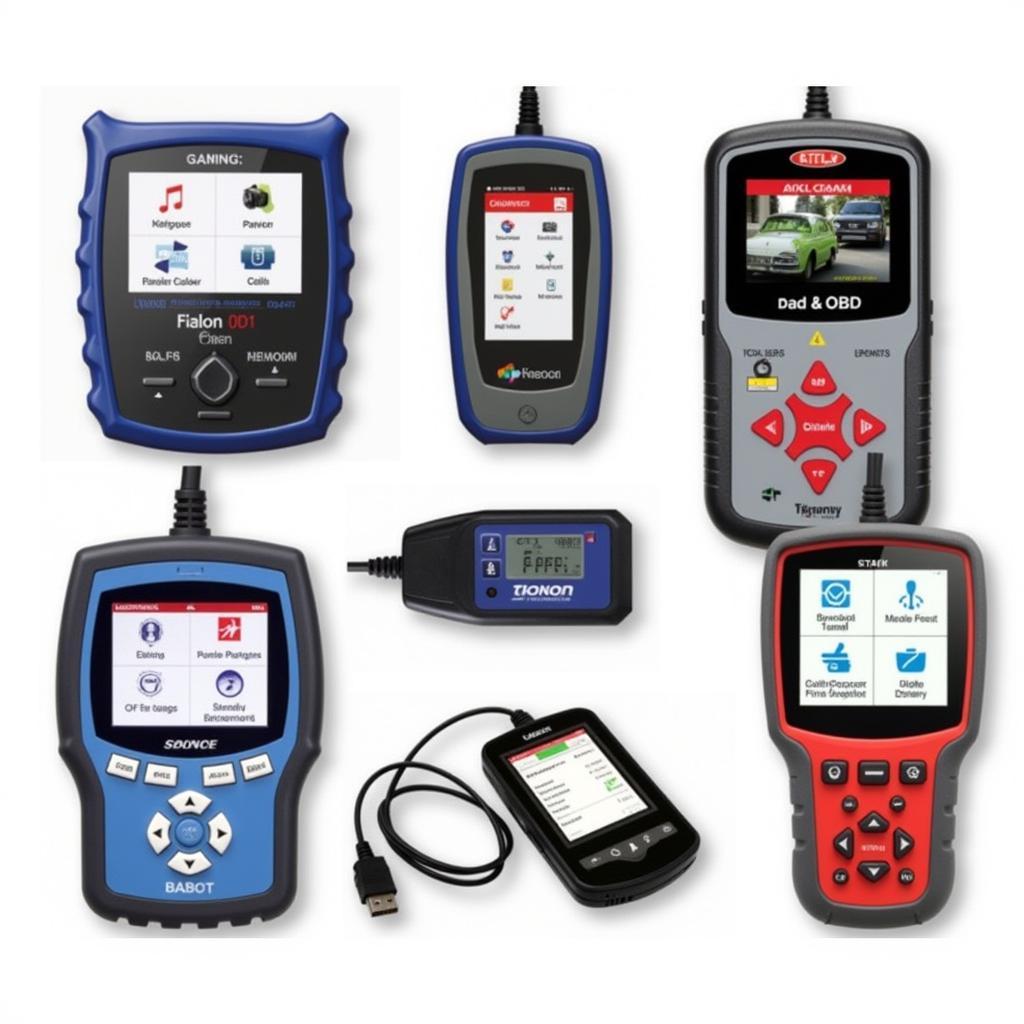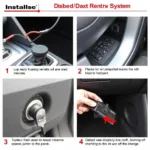OBD2 trouble code scanners are indispensable tools for car owners and mechanics alike, providing a window into the complex world of automotive diagnostics. By reading and interpreting trouble codes stored in your car’s computer, these handy devices can help you identify and fix issues quickly, saving you time and money in the long run.
What is an OBD2 Trouble Code Scanner?
An OBD2 trouble code scanner, also known as a code reader, is an electronic device that connects to your car’s onboard diagnostic system (OBD2) through a standardized port typically located under the dashboard. When your car experiences a problem, the OBD2 system generates a specific code that corresponds to the issue. The scanner retrieves these codes and displays them in a readable format, often accompanied by a brief description.
How Does an OBD2 Trouble Code Scanner Work?
Your car’s OBD2 system constantly monitors various sensors and systems, including the engine, transmission, emissions system, and more. When a malfunction is detected, a trouble code is stored in the system’s memory. By connecting an OBD2 scanner to the diagnostic port, you can access these codes and decipher their meaning.
Benefits of Using an OBD2 Trouble Code Scanner
Investing in an OBD2 trouble code scanner offers numerous advantages for car owners:
- Early Problem Detection: Identifying issues early on can prevent minor problems from escalating into major (and costly) repairs.
- Accurate Diagnosis: OBD2 scanners provide specific trouble codes, eliminating guesswork and leading to more accurate diagnoses.
- DIY Repairs: With the help of online resources and repair manuals, some car owners can use the information provided by the scanner to perform simple repairs themselves.
- Cost Savings: By diagnosing problems yourself, you can avoid unnecessary trips to the mechanic and potentially save money on labor costs.
- Increased Knowledge: Using an OBD2 scanner allows you to gain a better understanding of your car’s health and how its systems work.
Types of OBD2 Trouble Code Scanners
OBD2 trouble code scanners come in a variety of shapes and sizes, ranging from basic models to advanced professional-grade tools.
- Basic Code Readers: These affordable scanners provide basic code reading and clearing functionality, making them suitable for casual car owners.
- Advanced Scanners: These scanners offer additional features such as live data streaming, graphing capabilities, and manufacturer-specific code definitions, making them ideal for DIY enthusiasts and mechanics.
- Professional-Grade Scanners: These high-end scanners offer the most comprehensive functionality, including bi-directional control, advanced programming options, and access to manufacturer-specific data, making them essential tools for professional mechanics and dealerships.
Choosing the Right OBD2 Trouble Code Scanner
 Various OBD2 Scanners
Various OBD2 Scanners
When choosing an OBD2 trouble code scanner, consider your budget, technical expertise, and specific needs.
- Basic code readers are suitable for most car owners looking to check and clear engine codes.
- Advanced scanners are ideal for DIY enthusiasts who want more detailed information and diagnostic capabilities.
- Professional-grade scanners are best suited for professional mechanics and experienced users who require the most advanced features.
Using an OBD2 Trouble Code Scanner
Using an OBD2 trouble code scanner is generally straightforward:
- Locate the OBD2 Port: The OBD2 port is typically located under the dashboard on the driver’s side.
- Connect the Scanner: Plug the scanner into the OBD2 port.
- Turn on the Ignition: Turn the ignition key to the “on” position without starting the engine.
- Read the Codes: Follow the scanner’s instructions to read the stored trouble codes.
- Interpret the Codes: Use the scanner’s built-in definitions or consult online resources to understand the meaning of the codes.
- Clear the Codes: After addressing the underlying issues, use the scanner to clear the stored codes.
Common OBD2 Trouble Codes
While there are hundreds of potential OBD2 trouble codes, some of the most common ones include:
- P0420: Catalyst System Efficiency Below Threshold (Bank 1)
- P0300: Random/Multiple Cylinder Misfire Detected
- P0171: System Too Lean (Bank 1)
- P0135: O2 Sensor Heater Circuit (Bank 1, Sensor 1)
- P0401: EGR System Insufficient Flow Detected
OBD2 Trouble Code Scanners: Essential Tools for Car Maintenance
OBD2 trouble code scanners are essential tools for any car owner or mechanic who wants to stay on top of their vehicle’s health and performance. By providing valuable insights into your car’s inner workings, these devices can empower you to make informed decisions about maintenance and repairs, ultimately saving you time and money in the long run.
“As a seasoned mechanic, I can confidently say that an OBD2 scanner is an absolute must-have for anyone who wants to understand and maintain their car. It’s like having a personal mechanic in your pocket!” – John Miller, Certified Automotive Technician
FAQs
1. Can I use any OBD2 scanner on my car?
Most OBD2 scanners are compatible with a wide range of vehicles manufactured after 1996. However, it’s always a good idea to check the scanner’s compatibility with your specific make and model before purchasing.
2. Can I reset the check engine light with an OBD2 scanner?
Yes, most OBD2 scanners allow you to clear stored trouble codes, which will typically turn off the check engine light. However, keep in mind that the light may reappear if the underlying issue has not been resolved.
3. Do I need a professional-grade scanner?
Unless you’re a professional mechanic or an experienced DIY enthusiast, a basic or advanced scanner should suffice for most car owners.
4. Where can I find more information about OBD2 trouble codes?
Numerous online resources provide detailed information about specific OBD2 trouble codes, including their meaning, potential causes, and common solutions.
5. Are OBD2 scanners difficult to use?
Most OBD2 scanners are user-friendly and come with clear instructions. However, some advanced features may require some technical knowledge.
6. How often should I use an OBD2 scanner?
It’s a good practice to use an OBD2 scanner to check for trouble codes periodically, especially if you notice any unusual symptoms in your car.
7. Can an OBD2 scanner fix my car problems?
No, an OBD2 scanner is a diagnostic tool that helps identify problems. It doesn’t perform repairs.
For any assistance, reach out to us on WhatsApp: +1(641)206-8880 or Email: [email protected]. We have a 24/7 customer support team ready to help.

